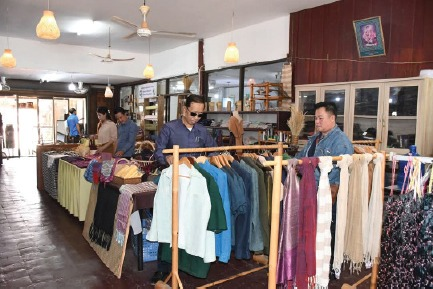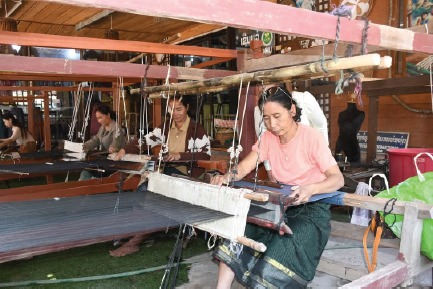ຂປລ
Silk weaving, a centuries-old tradition among Lao women, has transformed from a household craft into a thriving profession, providing economic stability for many families. While once limited to personal use, silk weaving now serves as a primary source of income, lifting entire communities out of poverty.

(KPL) Silk weaving, a centuries-old tradition among Lao women, has transformed from a household craft into a thriving profession, providing economic stability for many families. While once limited to personal use, silk weaving now serves as a primary source of income, lifting entire communities out of poverty.
One standout success story is that of Mrs. Khanthong Vilaysone, President of the Silk Weaving Cooperative in Ban Saphai, Champasak Province. With government support at various levels, her community has been able to preserve traditional weaving techniques while expanding into commercial markets.
In 2013, Mrs. Khanthong made the pivotal decision to shift from small-scale weaving to full-scale commercial production. To realize this vision, she secured a 300-million-kip bank loan, adding 15 million kip from her personal savings to invest in production. She then formed a weaving group, managing design and operations to align with market demands.

The initiative started with 10 families operating 13 looms. By 2020, the cooperative had grown to include 395 families and 415 looms, extending its reach to Pakse City, Phonthong District, and Bachieng District. Raw materials are sourced both domestically and internationally, while finished products are sold locally and exported to markets in Thailand and the United States.
According to Mrs. Khanthong, the cooperative purchases approximately 2.5 billion kip worth of products from its members annually. After deducting costs, the group generates an average household income of 464 million kip per year, with individual members earning about 32 million kip annually. This financial uplift has enabled many families to break free from poverty and improve their standard of living.
With such remarkable success, Mrs. Khanthong remains confident that silk weaving will continue to be a vital and sustainable profession. Not only does it preserve Lao culture, but it also offers stable income and development opportunities for countless families, ensuring a brighter future for generations to come.
KPL